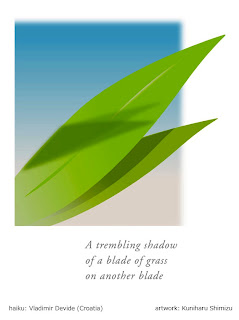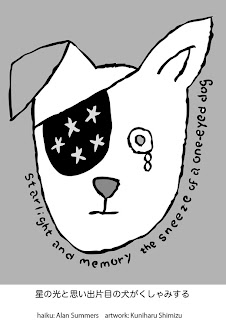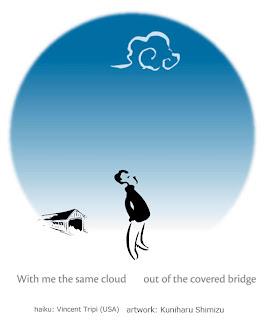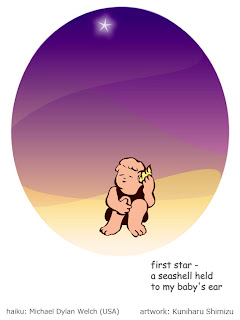
Haiku by Tony Pupello (USA). Artwork by myself.
Tony lives in NYC. I came to know him through a mutual friend, Jim Kacian. I was not involved with haiku then, but when I met Tony in NYC, he took me to a kukai held in the city. I remember that was a quite an experience, seeing all these people reading haiku in English. Dee Evitt, who led the kukai, asked me if I had some haiku to share, but of course I had none so I just sat still and observed the discussion.
Foggy night,
a foreign bird pecks alone
among city doves
On the next day, I went to the nearest Barnes & Noble, and picked up a copy of "Haiku Anthology" by Cor van den Heuvel, my first haiku book.



























